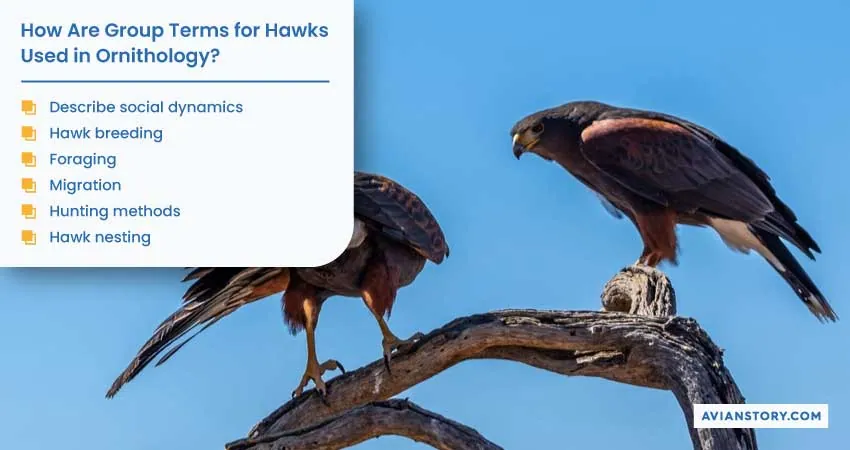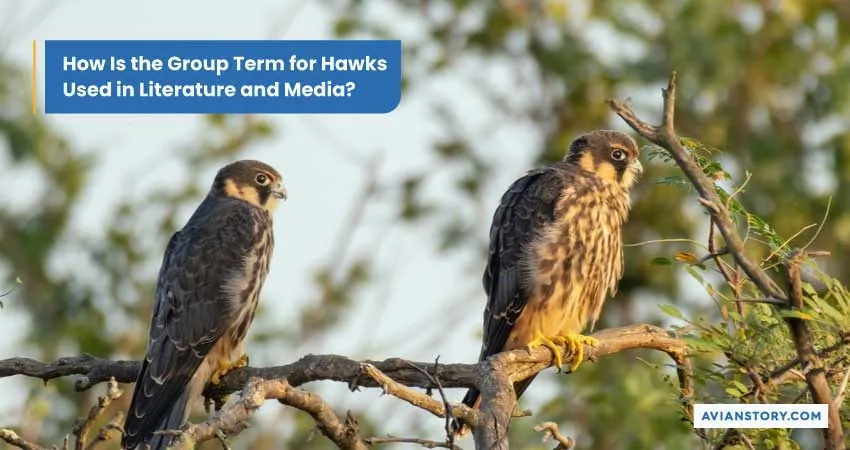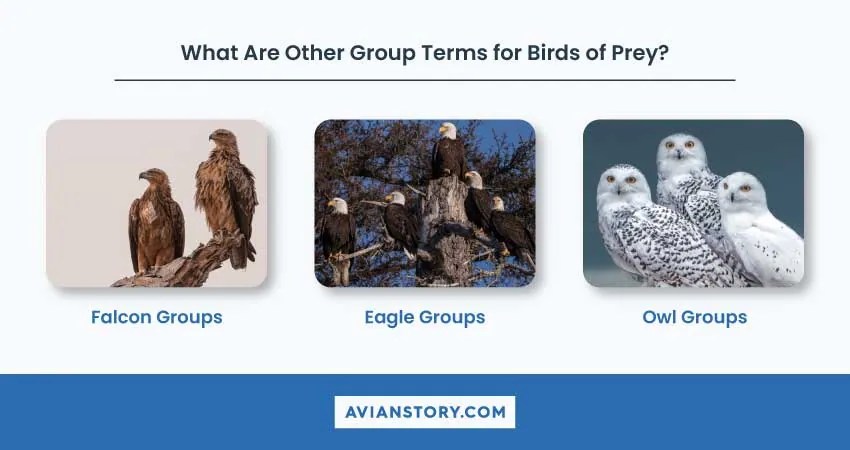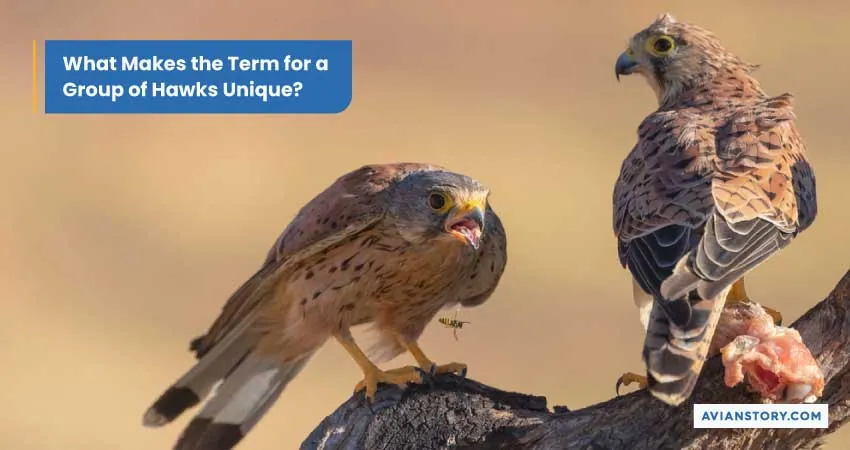What Is a Group of Hawks Called? Unraveling Avian Terminology
The hawks generally are solitary birds. But they are considered one of the most majestic bird groups when they fly together while migrating. But wait, what is a group of hawks called?
“Kettle,” “cast,” or “boil” are the most used terms for hawk groups. These terms are referred to as such due to the ways these hawks fly in groups. Moreover, their unity, bonding, and togetherness might also be the reason for the term to have originated.
Want to know more about the unraveling avian terminology of hawks? If yes, then binge on till the end of the blog.
What Is the Term for a Group of Hawks?: An Entire Overview

When several hawks are together or flying in a hurdle, they are called a “kettle.” However, the origin of the word and the reason why the word “kettle’’ is used for group hawks is still a question.
But, some think that the name came from how hawks fly together in the sky, which basically appears like steam rising from a boiling water pot.
Even though the term isn’t like other collective nouns (like “flock” for birds in general), it is still known and pretty much used by ornithologists.
But it’s essential to know that group names of animals can sometimes have more than one name depending on different regions and places.
For instance, certain people in certain areas can use the term “boil” or “cast” to refer to hawk groups.
How Are Group Terms for Hawks Used in Ornithology?

Group terms usually standardize and simplify the description of bird species’ socialism, behaviors, and certain traits in ornithology.
This terminology aids scientists, researchers, and birdwatchers in explaining hawk behavior, ecology, and observations.
Moreover, ornithologists can better understand and document hawk species by using their group words to:
- Describe social dynamics
- Hawk breeding
- Foraging
- Migration
- Hunting methods
- Hawk nesting
In a nutshell, hawk behavior, grouping pattern, and habitat are described by different ornithological names. For instance:
- The Rough-legged Hawk and Red-tailed Hawk are known as Buteo hawks. These hawks have certain behavioral and morphological traits.
- The Cooper’s Hawk and Sharp-shinned Hawk are called Accipiter hawks. These hawks are experts at hunting through dense vegetation.
- Raptors include eagles, hawks, owls, and falcons. The term emphasizes their predatory character and hunting ability.
- Hawks come with exceptional long-distance migration ability. These migration patterns are usually referred to as “spring migration” or “fall migration” by ornithologists.
These ornithological words aid scholars and bird experts in understanding hawks and their overall ecological responsibilities.
How Did the Term for a Group of Hawks Originate?

The origin of the term “cast,” “boil,” or “kettle” is not exactly known. However, the term is inspired by the flight patterns of the hawks.
Hawks are quite famous for their aerial displays, especially during the migration period when groups of hawks soar together.
These swirling hawks might have inspired the bird experts to call the group “kettle” or “boil” like boiling kettle steam.
Cultural and certain environmental influences might also have led to such terms. Hawks have always been associated with power, strength, and nobility, which may have impacted the development of terminology.
In many societies, hawks represent hunting ability, sharp vision, and agility. This cultural significance might also have inspired different group terms for hawks.
However, it is unclear when or how the term “kettle” originated and got connected with hawks.
In a nutshell, all these hawks’ facts and group terms’ origin have a big influence on the places they came from and the overall locality.
How Is the Group Term for Hawks Used in Literature and Media?

Different wildlife and bird nature books use the term “cast” to describe hawk groups. These metaphors are generally inspired in a way to state how hawks have a more collective behavior and majestic looks.
In literature, authors may even use “cast” to describe hawks soaring and wheeling together in the sky, emphasizing their aerial prowess and grace.
Moreover, television, film, and other media use “cast” to indicate hawk groups. Different nature programs may even use this term to explain the visual impact of group hawks in flight.
The term “cast” can even be used as a metaphor for togetherness, teamwork, and strength.
What Are Other Group Terms for Birds of Prey?

Like hawks, other birds of prey also have several group terms. Let’s check it out for some of the top birds of prey.
Falcon Groups
- The term “cast” is also used for falcons. Falcons are recognized for their hunting and agile flight, and the phrase “cast” evokes falcons flying together.
- Another term for a falcon group is “eyry” or “eyrie.” It refers to falcon nests and certain breeding places, like “aerie” for eagles.
Eagle Groups
- “Convocation” is mainly a collective term for eagles. It depicts eagles gathering for migration or communal roost.
- “Aerie” can mean a group of eagles or their nest.
Owl Groups
- “Parliament” is the most common term for owls. It comes from community roosting in certain owl species.
- “Stare” is another term for owls. It also refers to owls gathering, possibly due to their piercing gaze.
What Makes the Term for a Group of Hawks Unique?

The word “kettle,” or even “boil” is quite a unique term used for group hawks. Many groups of birds have well-known collective names, like “flock” for almost all birds and “murder” for crows.
The word “kettle” has cultural and social meaning because it shows how much people admire hawks as a group.
That’s not all; people often consider hawks powerful, beautiful, and quite royal birds because they are quick, strong, and have astounding eyesight.
Bottom Line
So, after skimming through the blog, you should now have a clear knowledge of the hawk facts and their overall group terms.
честные казино с быстрыми выплатами
бездепозитные бонусы казино
играть в лучшем казино на деньги
база казино с бездепозитным бонусом
онлайн казино России
casino oyunu
Hawks are quite strong with majestic looks and hunting skills and this can be one of the valid reasons for these bird groups to be referred to as “cast.” Moreover, the way they fly in patterns resulted in the terms “kettle” and “boil” as they appear like steam in the boil.
In contrast, all these aspects make the group term for hawks so unique and interesting.
